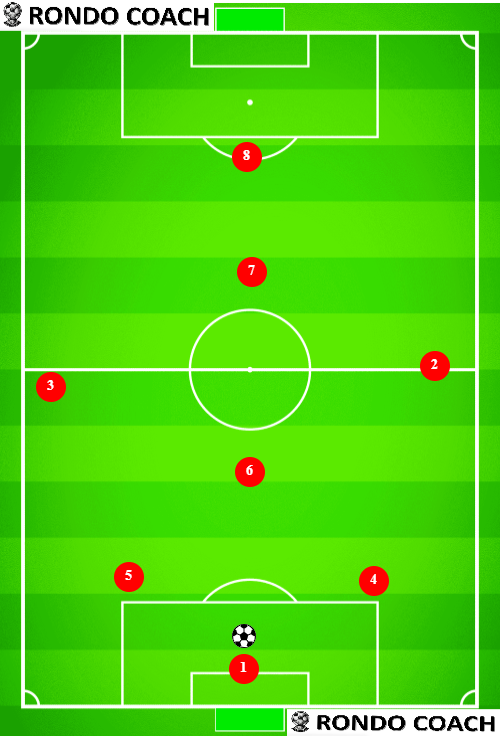8v8 Soccer Formation [Complete Guide for Coaches 2024]
While not part of standard formations for youth soccer level, there are some tournaments set for competing in the 8v8 soccer formation. It is a sweet spot of adding complexity between the 7v7 developmental league and the mid-level 9v9 at U11/U12 level. For this reason, some summer tournaments introduce playing 8-a-side in the summer after U10, so that players get adjusted. I have used that to introduce the different roles of central midfielders, which was a great bridge before the fall season started. Let’s get into how to choose the right formation for your goal of coaching and winning.
What is the best 8v8 soccer formation?
While not taking into account the types of players you have at your disposal, the best formation for 8v8 is the 2-4-1 formation in a diamond shape. While providing a balance between attack and defense, with a strong foundation at the back while also allowing for creativity in the attack, this is the best formation for both winning and coaching. In transition, we can think of how to morph the formation into a 3-3-1. This will depend on the moment of the game and the opponents. The key point is to create lots of opportunities to create triangles of passing for keeping possession, as well as open opportunities for long balls in space for your attacker if that is a way you need to attack.
2-4-1 [Guide and Progression]

This is as a natural succession from 2-3-1 as it comes. The main downside of that formation is the demand for two roles that the central midfielder needs to play. They are both a holding midfielder and an attacking midfielder. It is very rare that a player can be a good 6 and 10. In fact, I can’t think of any. So in this case, we specialize those roles by adding an extra player there. Your best players will play in these positions and will get lots of touches on the ball.
In a standard diamond-shaped formation, we have a formation that has many triangles of passing, which makes it perfect for possession-based play. You get to keep the width with your wingers, solid defenders, a ball-playing goalkeeper, and a pressing striker. The one thing that you will have to address is the lack of width. This is the first time you will have to ask your striker and your 10 to think about drifting to the flanks to provide support when needed.
PROS
Easy buildup from 7v7
Balanced approach
Goalkeeper participates in building attack
CONS
Wings can be light
Defenders have to communicate well
Requires disciplined wingers
3-3-1 [Guide and Progression]

I usually think of it as a defensive-minded formation. Let me be clear – it is easier to structure this and it brings more stability at the back. However, I feel that is because players are not challenged as they should be to develop skills that they don’t naturally have, such as communication and dynamic positioning.
When it comes to winning a game, the formation can provide stability in defense. Compared to the 2-4-1, imagine if you move the central players back. The holding mid becomes the central defender. At the same time, the attacking midfielder becomes the bottom of the diamond with the striker at the top. This means that it’s easy to convert into this formation when trying to defend the result.
PROS
Simple structure to coach
Dedicated striker
Easy to balance against high press and low block
CONS
Goalkeeper is not part of attack
Center of the pitch can be light
Hard to break low block
Conclusion
This is the complete guide on how to play and coach the 8v8 soccer formation. While this setup is not common in the youth soccer system in the US, it can be a stepping stone to build players that can play in 9v9 formations, and even 11v11. As many other formations, we always look at how this can be used for coaching. As coaches, it is our job to set the environment where players can learn without our intervention. Then, we jump in when we see that we need to bring structure into the learning. However, all of that is part of a long-term plan that we see, even if the players don’t. Of course, everybody wants to win, so in addition to teaching, we want to set the team to score and not concede. So, we discussed strategy for that and for transitioning between the formations depending on the score and the moment. Play hard and have fun!








